cheesestraws
Well-known member
Just to be clear, different greases were used in drives at different times and places.
IIRC this is specifically the one that was recommended in the service manual for most of them, though.
Just to be clear, different greases were used in drives at different times and places.
I believe it was a supplier said "We used that". Which is one person's memory of a snapshot in time.IIRC this is specifically the one that was recommended in the service manual for most of them, though.
In locomotives we use greases that meet requirements, not the one single product that a suplier once told us they used to use.
They obey the same laws.I hate to break it to you but these aren't locomotives.


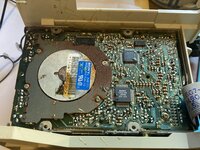
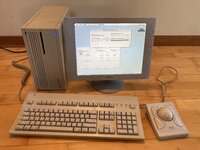
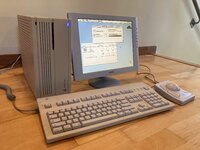
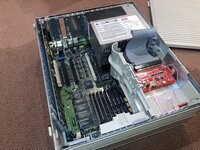
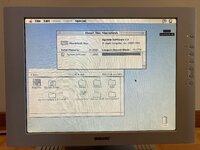
You did so much work on this, and it's all really awesome. I think I've repaired 3 or 4 IIcx machines over the past few years, and it's always nice hearing that chime and seeing that you converted a piece of junk into something working again.Repairs and upgrades made:
I've often said that broken computers should be priced above working ones. A broken computer is an engineering challenge and an interesting project. Now that it's all working, I can show it off with some pride. If somebody just gave me an already-working IIcx I don't think I'd care about it nearly as much.It's funny, what is it about these old machines that we're now willing to put so much time into fixing them, but when they were new, despite them being worth more than ten times as much, we never would have.
If somebody just gave me an already-working IIcx I don't think I'd care about it nearly as much.
I think the list of tasks you provided is a really good template for a lot of bombed Macs. (Obviously, it's not an exhaustive list but still quite thorough and has a lot of good things to try.) I'm going to keep a copy of that saved.OK folks, after fifteen days this Macintosh IIcx restoration has finally reached the finish line. It began with a non-functional bucket of parts, coated in capacitor juice and exploded battery goo, and ended with a completely restored and fully working Mac. This is now the best-looking machine in my lineup, with a clean case that's virtually free of any yellowing, and a sexy blue power LED.
In case you've forgotten where this all started, the IIcx was in sorry shape with capacitor damage and battery damage:
View attachment 64689
View attachment 64690
View attachment 64691
Repairs and upgrades made:
This probably makes it sound like I knew what I was doing and had a plan for everything, but in truth I was just banging into problem after problem. For a long time the motherboard wouldn't do anything, then finally it would play chimes of death, then later it booted but exhibited a variety problems, which had to be hunted down and fixed one-by-one.
- Brushed clean the motherboard with alcohol to remove battery/cap residue
- Hosed down the case and washed with soap
- Removed the old battery holder, which crumbled into plastic cheese in my hands
- Recapped the motherboard with tantalums
- Repaired three broken traces in the soft-power circuit
- Replaced 74HC132 at UM2 and reflowed solder joints on the other chips in the soft-power circuit
- Repaired a broken trace to the RAM mux that prevented 4MB SIMMs from working
- Restored a damaged RAM SIMM by reflowing solder joints on the RAM chip
- Installed a new battery holder
- Swapped the power LED for a blue LED
- Bathed the motherboard in hot soapy water followed by a full alcohol submersion
- Replaced the gear in the floppy drive eject motor
- Lubed the gummed-up floppy mechanism
- Brushed and scrubbed the floppy drive controller PCB to remove conductive goo causing problems
- Replaced the PSU with an ATX conversion inside the original PSU enclosure
- Installed a MeowToast CR2032 battery
- Installed a Macintosh High Resolution video card
- Installed a Zulu SCSI hard disk
- Replaced the missing programmer/reset buttons
- Played one game of Tetris Max
Many thanks to everybody who offered troubleshooting help, especially @Phipli who always offered productive advice for everything that went wrong. I definitely wouldn't have finished this Mac restoration without all the assistance I received here from 68kMLA.
So there it is, a Macintosh IIcx with 16 MHz 68030 and 20 MB RAM, working as well as the day it was built. Here are some photos of the finished product:
View attachment 64699
View attachment 64697
View attachment 64701
aView attachment 64694
